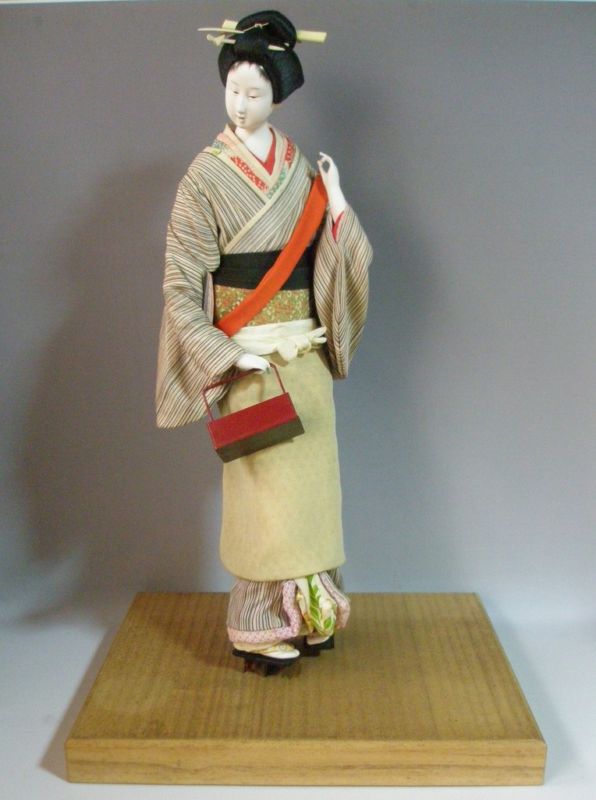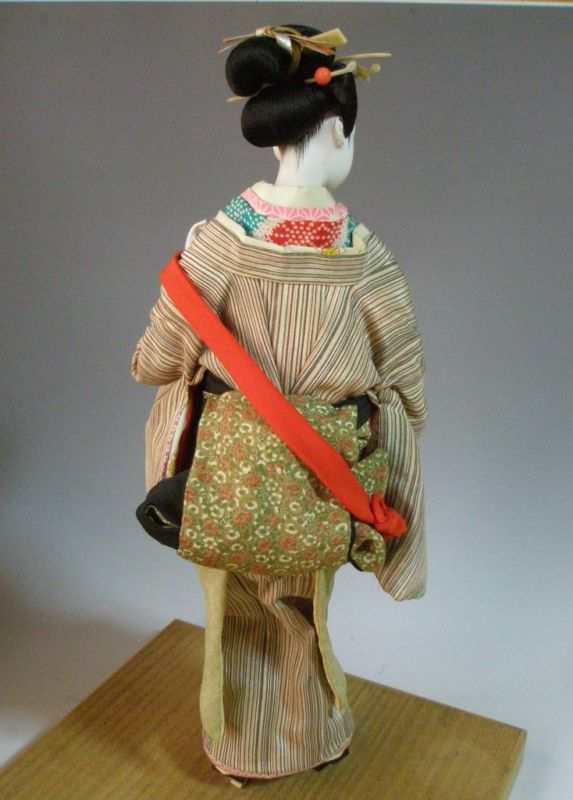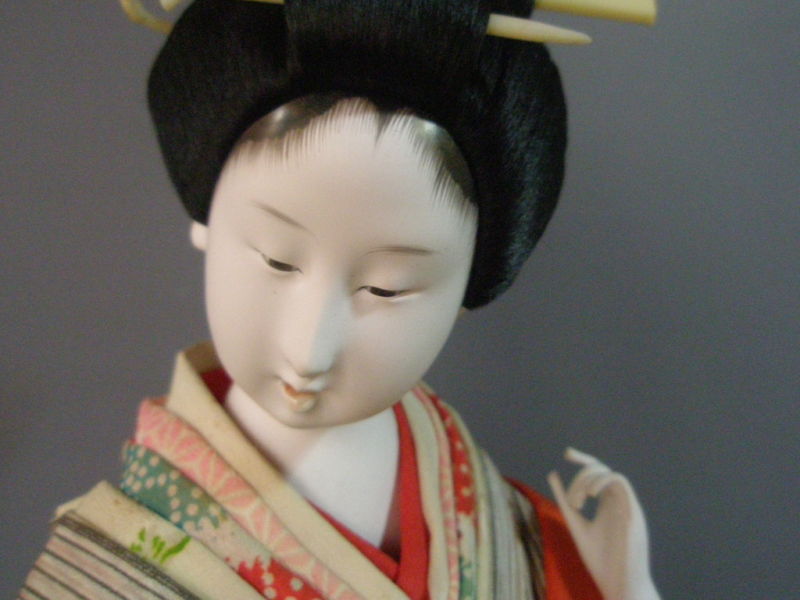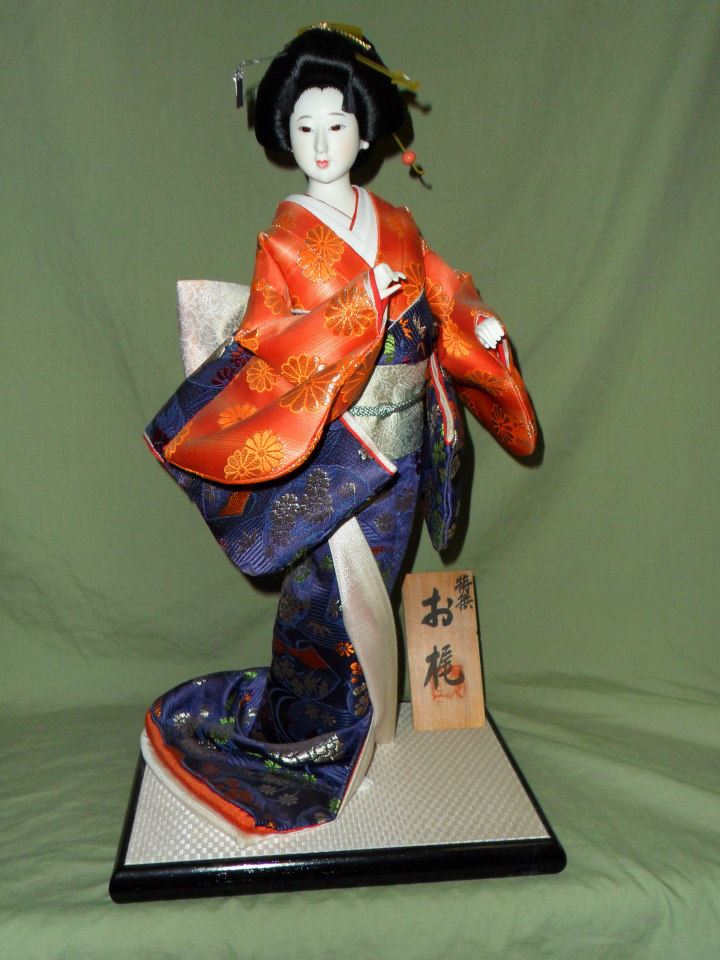
|
Subject:Another Japanese Costume Doll, Taisho Period?
Posted By: Joe Benevides Sun, Apr 20, 2014 IP: 67.182.107.188
I purchased this old 19 inch costume doll three years ago from a seller in Imabari on the northwest side of the island of Shikoku. He hunts flea markets at shrines and temples for items to sell to Westerners, so he knew nothing about it other than it appears to be early 20th century.
Early Japanese costume dolls could be commissioned to represent a specific individual who would normally be portrayed as someone of high social rank or nobility. In this case, the doll is unusual because she does not appear to be a special commission since she represents a peasant woman, which may mean that she was designed to represent the doll artist’s relative, most likely his wife or daughter. But I’m just guessing and there’s no way anyone could ever know.
Are there any Japanese doll experts that can give an opinion about its age? It’s hard for me to say since most of my dolls are 1950s, but I’m thinking Taisho, c. 1920, based on quality and an open mouth with little tongue and teeth,
Thanks for your help!





|
 Another Japanese Costume Doll, Taisho Period?
Another Japanese Costume Doll, Taisho Period?  ( China & Japan ) - Joe Benevides - Apr 20, 2014 (03:18 PM)
( China & Japan ) - Joe Benevides - Apr 20, 2014 (03:18 PM)  Re: Another Japanese Costume Doll, Taisho Period? - Jim - Apr 21, 2014 (05:41 AM)
Re: Another Japanese Costume Doll, Taisho Period? - Jim - Apr 21, 2014 (05:41 AM)  Re: Another Japanese Costume Doll, Taisho Period?
Re: Another Japanese Costume Doll, Taisho Period?  - Joe Benevides - Apr 22, 2014 (12:46 AM)
- Joe Benevides - Apr 22, 2014 (12:46 AM) 


